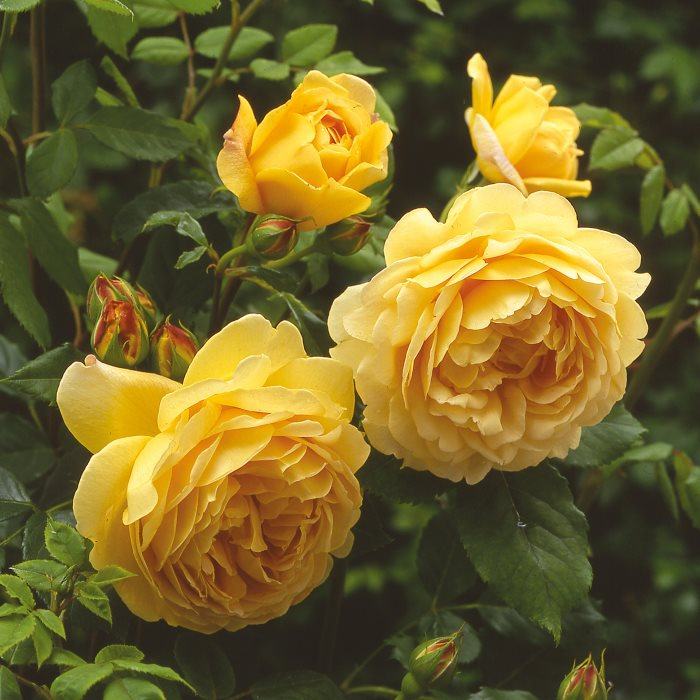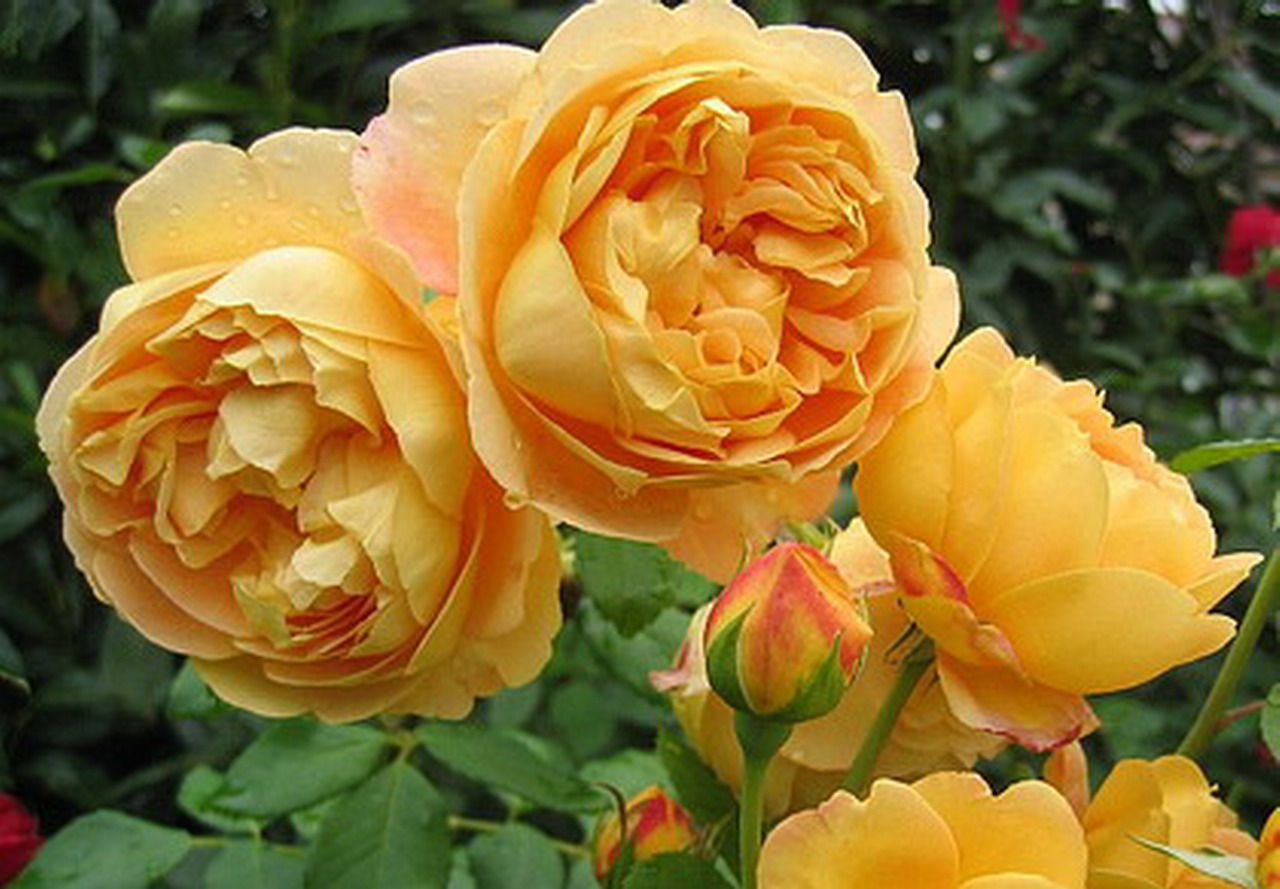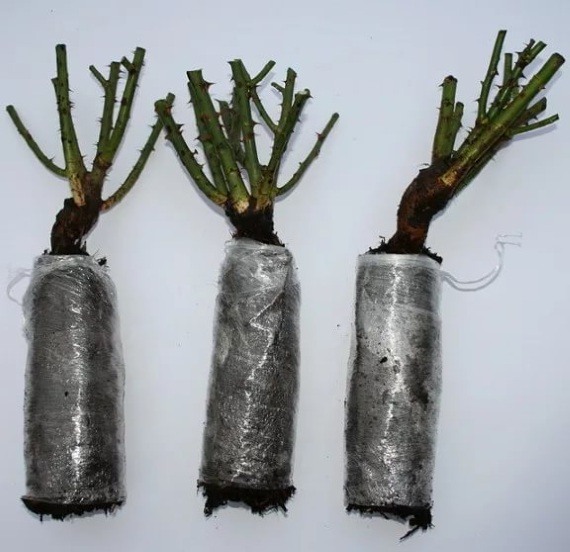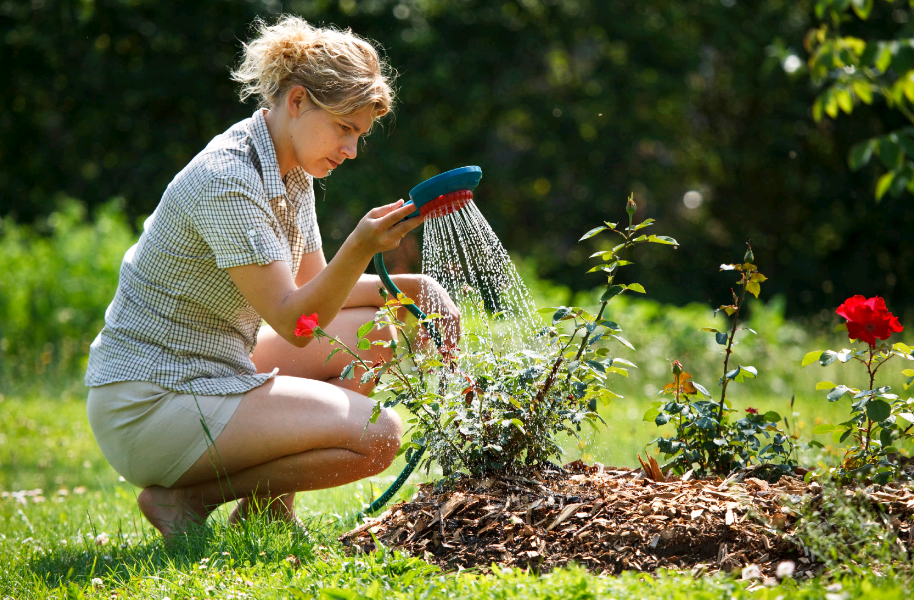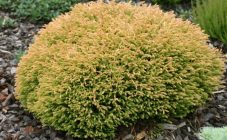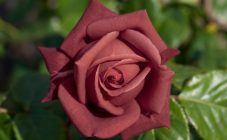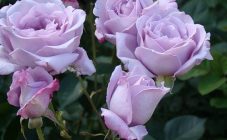Content:
In addition to the official types of roses, there are unofficial groups, which include English roses, bred by the breeder from Great Britain, D. Austin. This specialist has received several dozen varieties of the "queen of flowers", each of which is a real masterpiece. Rose Golden Celebration is one of the best in D. Austin's collection. The popularity of this flowering perennial is high, as the plant tolerates any weather changes well, and its flowering does not deteriorate. But it should be remembered that when planting seedlings and further caring for a rose, certain rules must be followed. Other positive qualities of the variety, the main characteristics, the nuances of cultivation will be discussed below.
The history of the creation of the variety
D. Austin in the middle of the last century decided to "breathe" a second life into the old varieties of roses grown in the UK. He crossed them with modern climbing, tea varieties and floribundas. In addition, another goal of this breeder was to create varieties with yellow and orange buds. And he succeeded - several dozen species of the "queen of flowers" with the color of buds from pale yellow to peach and orange flowers were presented to the court of florists.
A little later, at the end of the last century, the Golden Celebration rose was introduced. Specialists from the British rose-growing company David Austin Roses worked on its creation. Its working title is AUSgold. A few years later, this variety was patented in many European countries, and this flowering perennial came to other continents.
The description of the variety says that the Celebration rose was obtained by crossing the varieties Charles Austin and Abraham Darby. For a relatively short period of its existence, the Golden Celebration rose has repeatedly received prizes and diplomas at the most prestigious international exhibitions.
Characteristics and features of the variety
This flowering perennial shrub is strong and spreading enough, its height is 1.4-1.5 m, the bush in diameter can reach the same size. Shoots are powerful, slightly drooping. In warm regions, the stems of the Celebration park rose stretch very strongly during the season, so they are grown there as climbing. Another plus of the plant is the average number of thorns on the shoots. The leaf plates are quite rigid, compacted, rich emerald color, with a characteristic gloss on the upper part of the foliage.
The main pride of this flowering perennial is the buds that bloom on the shoots. The color of these flowers is unusual, you can compare it with an orange egg yolk, to which pink and peach shades are added in the form of small merging dots. As a result, the color of the petals is copper with golden. The diameter of the blossoming bud is up to 14-14.5 cm, which is quite large for rose bushes. Moreover, there are few varieties of roses with such a shade in the Austin collection.
On the shoot, these buds are usually collected in racemose inflorescences, slightly drooping under the weight of their own weight. The flowering of this shrub is repeated, the first wave of which is the most abundant. The buds begin to bloom on the Golden Celebration rose in the first decade of June, and flowering ends in the last decade of October.
The sweet-fruity aroma of blossoming buds is very persistent, well perceptible.
The frost resistance of this perennial is average, but the resistance to powdery mildew and black spot is high. This variety perfectly tolerates heat and short-term rainfall, without stopping abundant flowering.
Agrotechnics
This plant does not tolerate shade well, its flowers also quickly fade under the hot midday rays of the sun, so the best area for them is where the sun illuminates the bushes in the morning and evening hours, and in the afternoon the rose falls into light partial shade from a building, hedge or fruit trees.
The place for planting bushes should be protected from gusts of cold wind and strong drafts. The site for planting is prepared in advance, preferably in the fall: manure or other organic matter (compost or humus) must be introduced for digging. In the spring, the site is dug up again and complex mineral fertilizers are applied.
Saplings can be planted outdoors in the spring or fall. It is better for novice flower growers to plant this rose in the spring so that it takes root and grows stronger over the summer, and in the fall such a gardener may not guess the time of planting, the plant does not acclimate in a new place and freezes in winter.
Planting material should be planted in the second decade of May. The depth of the planting holes should be at least 0.4 m, since the roots grow very quickly and go deep into the soil. The root collar is buried 2.5-3 cm in the soil.If it is too deep, the bush will degenerate into a rosehip and may not bloom at all.
After planting, the soil should be well compacted so that the seedling does not stagger, otherwise the bush will not be able to take root well.
This flowering shrub requires good care, if the gardener does everything wrong, he may not wait for abundant flowering.
The main requirements for the care of this variety:
- compliance with the irrigation regime;
- loosening the soil with the simultaneous removal of weeds;
- mulching the trunk circle after watering;
- regular fertilization during the season;
- pruning shrubs in the spring and after flowering (if necessary).
The following watering regime should be observed:
- the bushes are irrigated once every 3-4 days;
- in hot weather, the number of waterings is increased;
- moisturize less frequently in the rainy season.
After each watering, the soil should be loosened, all weeds should be removed and a layer of mulch should be added - humus, sawdust or grass.
These flowering bushes should be fed several times per season. In the spring, mineral fertilizers containing nitrogen are applied under the plants, since this microelement contributes to the active growth of the vegetative mass. As soon as the first buds appear on the shoots, top dressing should be applied again. During this period, fertilizers that contain phosphorus and potassium will go well, and nitrogen fertilizing is excluded, otherwise stems and foliage will actively grow on the bushes to the detriment of abundant flowering.
During the flowering period, potassium-phosphorus fertilizers are once again applied, and at the end of it, before the onset of cold weather, the rose bushes are fed for the last time, adding superphosphate and potassium salt.
In the spring, before the appearance of young foliage, sanitary pruning is carried out. It is necessary to remove all damaged, diseased, frozen and dried shoots. This procedure activates the growth of the shrub. In the summer, you should remove excess young shoots growing inside the bush to avoid thickening, as well as fading buds. Autumn pruning is carried out as needed.
Advantages and disadvantages of the variety
The main advantages of this plant include:
- high resistance to fungal diseases;
- repeated profuse flowering;
- high vigor of shoot growth.
There are not many disadvantages of a flowering plant: they do not tolerate a prolonged rainy period, they require good shelter for the winter, since their frost resistance is below average.
But in general, the Golden Celebration rose can be grown not only in warm regions of Russia, but also in the Moscow region and other regions with a similar climate. Even a beginner will cope with this if you follow the recommendations presented above.
